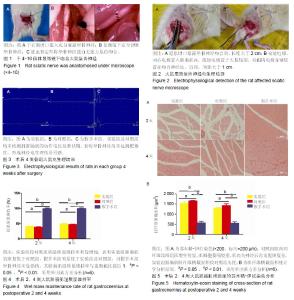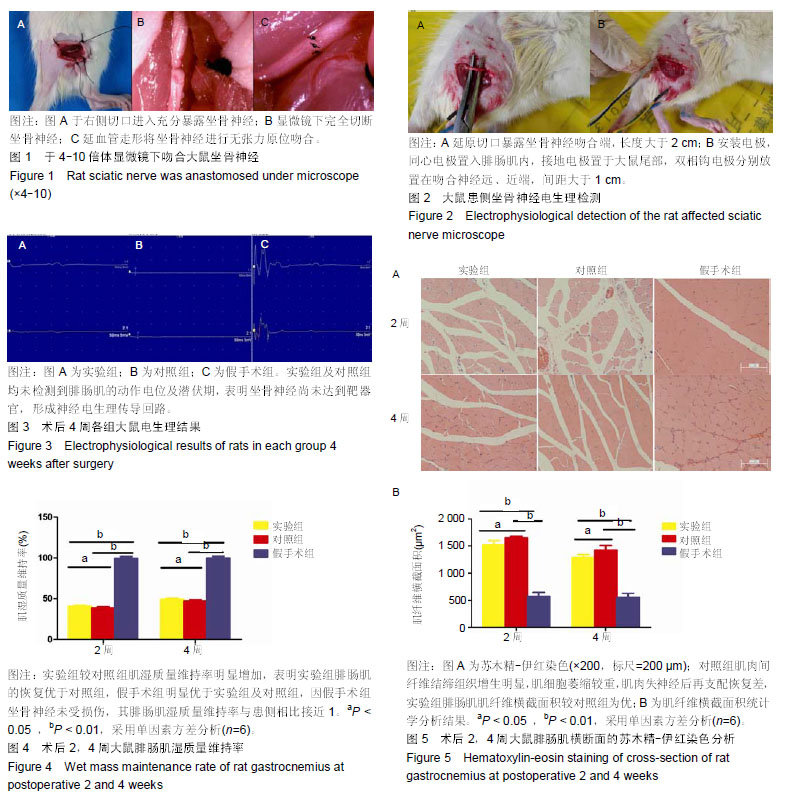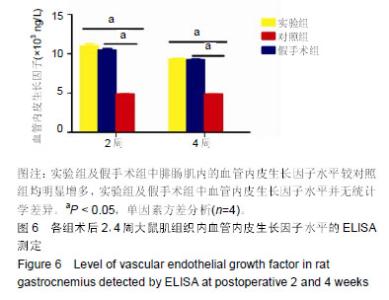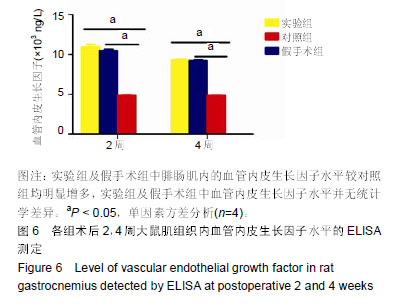| [1]Bueno CRS,Pereira M, Favaretto IAJ, et al. Electrical stimulation attenuates morphological alterations and prevents atrophy of the denervated cranial tibial muscle. Einstein. 2017; 15(1):71-76.[2]Pinheiro-Dardis CM, Erbereli BT, Gigo-Benato D, et al. Electrical stimulation delays reinnervation in denervated rat muscle. Muscle Nerve. 2017;56(6):E108-E118.[3]Farjah GH, Fazli F, Karimipour M, et al. The effect of bone marrow mesenchymal stem cells on recovery of skeletal muscle after neurotization surgery in rat. Iran J Basic Med Sci. 2018;21(3):236-243.[4]Paradis-Deschenes P, Joanisse DR, Billaut F. Ischemic preconditioning increases muscle perfusion, oxygen uptake, and force in strength-trained athletes. Appl Physiol Nutr Metab. 2016;41(9):938-944.[5]Neumann JT, Thompson JW, Raval AP, et al. Increased bdnf protein expression after ischemic or pkc epsilon preconditioning promotes electrophysiologic changes that lead to neuroprotection. J Cereb Blood Flow Metab. 2015 Jan;35(1):121-130.[6]Hsu ST, Yao CH, Hsu YM, et al. Effects of taxol on regeneration in a rat sciatic nerve transection model. Sci Rep. 2017;7:42280[7]Dirnagl U, Simon RP, Hallenbeck JM. Ischemic tolerance and endogenous neuroprotection. Trends Neurosci. 2003;26(5): 248-254.[8]Zemke D, Smith JL, Reeves MJ, et al. Ischemia and ischemic tolerance in the brain: An overview. Neurotoxicology. 2004; 25(6):895-904.[9]Lintz JA, Dalio MB, Joviliano EE, et al. Ischemic pre and postconditioning in skeletal muscle injury produced by ischemia and reperfusion in rats. Acta Cir Bras. 2013;28(6): 441-446.[10]Park UJ, Kim HT, Cho WH, et al. Remote ischemic preconditioning enhances the expression of genes encoding antioxidant enzymes and endoplasmic reticulum stress-related proteins in rat skeletal muscle. Vasc Specialist Int. 2016 Dec;32(4):141-149. [11]Liu Y, Wang D, Zhao Y, et al. Repetitive brief ischemia can promote bone healing in a rat tibia fracture model. Int J Clin Exp Med.2016;9(11):20960-20967.[12]Ruven C., Wu W. Muscle atrophy following peripheral nerve injury and strategies to prevent it. In: Andres Costa E.V., editor. Horizons in Neuroscience Research. Volume 28 NOVA Science Publishers; Hauppauge, NY, USA: 2017.[13]Tuffaha SH, Budihardjo JD, Sarhane KA, et al. Growth hormone therapy accelerates axonal regeneration, promotes motor reinnervation, and reduces muscle atrophy following peripheral nerve injury. Plast Reconstr Surg. 2016; 137(6): 1771-1780.[14]Arsic N, Zacchigna S, Zentilin L, et al. Vascular endothelial growth factor stimulates skeletal muscle regeneration in vivo . Mol Ther. 2004;10(5):844-854.[15]Frey SP, Jansen H, Raschke MJ, et al. Vegf improves skeletal muscle regeneration after acute trauma and reconstruction of the limb in a rabbit model. Clin Orthop Relat Res. 2012 Dec; 470(12):3607-3614.[16]Rissanen TT, Vajanto I, Hiltunen MO, et al. Expression of vascular endothelial growth factor and vascular endothelial growth factor receptor-2 (kdr/flk-1) in ischemic skeletal muscle and its regeneration. m J Pathol. 2002;160(4): 1393-1403.[17]Nishimoto H, Inui A, Ueha T, et al. Transcutaneous carbon dioxide application with hydrogel prevents muscle atrophy in a rat sciatic nerve crush model J Orthop Res. 2018;36(6): 1653-1658.[18]Coban YK, Ciralik H, Kurutas EB. Ischemic preconditioning reduces the severity of ischemia-reperfusion injury of peripheral nerve in rats . J Brachial Plex Peripher Nerve Inj. 2006;1:2. [19]Johnson EO, Zoubos AB, Soucacos PN. Regeneration and repair of peripheral nerves. Injury. 2005,36 Suppl 4:S24-29.[20]Lee SK, Wolfe SW. Peripheral nerve injury and repair. J Am Acad Orthop Surg. 2000;8(4):243-252. |



